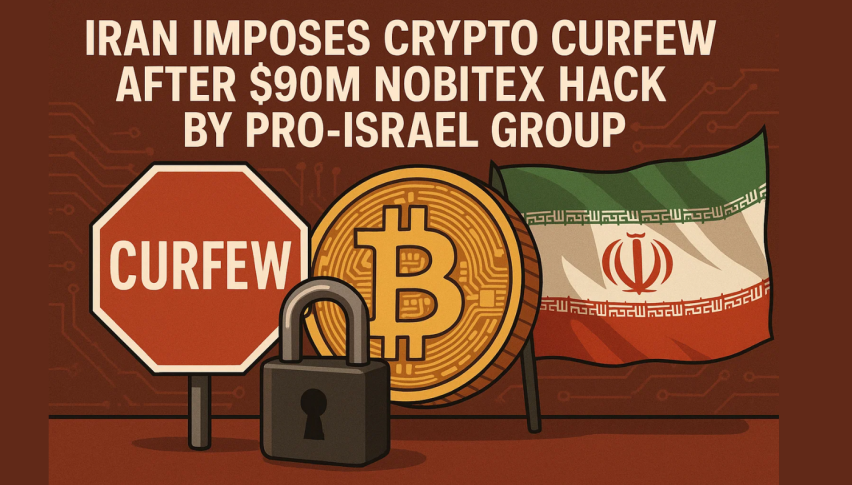Massive Cyber Strike Targets Iran’s Top Crypto Exchange
On June 18, 2025, Iran’s largest cryptocurrency exchange, Nobitex, suffered one of the most significant and politically charged cyberattacks in the history of digital finance. An estimated $90 million worth of digital assets—including Bitcoin, Ethereum, Dogecoin, and other altcoins—was drained in a meticulously executed operation. But what made this breach extraordinary wasn’t just the scale of the loss—it was the message behind the theft.
The hacking group Predatory Sparrow (also known by its Farsi name, Gonjeshke Darande) has claimed responsibility. Their aim was not profit. Instead, they sent a chilling political statement, accusing Nobitex of supporting Iran’s Revolutionary Guard Corps (IRGC) and facilitating the movement of funds linked to state-sponsored terrorism. To reinforce this message, the stolen assets were not laundered or moved to cold storage—they were burned.
Who Is Predatory Sparrow? 💻🕵️
The group calling itself Predatory Sparrow is no stranger to high-profile cyberattacks in the region. Cybersecurity analysts widely believe the group to be linked to Israeli intelligence operations. This attribution comes on the heels of multiple past cyber incidents targeting Iranian infrastructure, including power plants, steel mills, and gas stations.
Predatory Sparrow has a known signature: politically motivated cyber warfare. In this latest case, they released part of Nobitex’s source code and internal logs online, publicly exposing the exchange's back-end systems and allegedly showcasing its ties with Iranian military and intelligence elements.
The public release included screenshots, operational logs, and addresses to which funds were transferred. But perhaps the most jarring element of their disclosure was their use of vanity wallet addresses—public crypto wallet addresses embedded with anti-IRGC and anti-Iran messages. These wallets are effectively burn addresses—meaning the stolen funds are now permanently inaccessible.
Breakdown of the Attack: Step by Step 💣
Breach and Asset Movement
According to blockchain forensics experts, the attackers gained access to Nobitex’s hot wallet infrastructure. Once inside, they immediately initiated a transfer of funds across multiple blockchains. Over a 12-hour period, nearly $90 million worth of assets were drained, including BTC, ETH, DOGE, XRP, SOL, and TRX.
Custom Wallet Messages
Each transfer was made to wallets that included offensive phrases directly aimed at the Iranian regime, including “DownWithIRGC” and “Death2Terror”. The messages embedded in these wallets signaled that this was more than theft—it was a calculated political strike.
Destruction Instead of Profit
Rather than funneling the funds through mixers or laundering protocols, the attackers destroyed the crypto by sending it to burn wallets—addresses with no known private key. This means the funds cannot be recovered or reused. In crypto terms, the funds are dead forever.
Nobitex’s Role in Iran’s Financial Ecosystem 🏦
Nobitex isn’t just a cryptocurrency exchange—it is the primary on-ramp and off-ramp for crypto within Iran’s borders. With over 7 million registered users, it functions as Iran’s gateway to international digital finance, enabling citizens and institutions to move wealth across borders, bypassing international sanctions.
According to data collected over the past two years, Nobitex has been linked to wallets used by the IRGC, Houthi rebels, and Hezbollah affiliates. These findings have triggered concern among global watchdogs and may have led directly to the exchange becoming a target.
By compromising Nobitex, the attackers struck a blow not just to a business, but to a system that has been quietly facilitating Iran’s sanctioned economic activities.
Iranian Government’s Reaction 🛑
Following the breach, Iran’s Central Bank issued an immediate statement directing all domestic crypto exchanges to limit operating hours to between 10:00 AM and 8:00 PM, citing national security and the need to perform regulatory audits. Nobitex took their platform offline for 36 hours and issued a public apology, stating they were conducting a “complete internal audit and infrastructure overhaul.”
They also activated an internal reserve fund to compensate affected users, claiming that their “user protection protocols” had minimized overall user exposure. But doubts remain.
Public confidence in Iran’s crypto space has taken a major hit. Users have reported delays in withdrawals, paused trading activity, and a complete lockdown on large-scale transfers. The government is now facing pressure to bring Nobitex under tighter scrutiny, with some insiders suggesting a state takeover may be on the table.
Geopolitical Implications 🌍⚔️
This cyberattack marks a watershed moment in the use of blockchain as a battleground for nation-state conflict. By destroying $90 million in crypto, the hackers effectively turned digital assets into a weapon of economic disruption.
The attack came just days after several cyber incidents targeted other elements of Iran’s digital infrastructure, including:
- Denial-of-service attacks on banking apps
- Malware infiltrations in government networks
- Intermittent blackouts in national internet access
Experts believe this may be part of a coordinated cyber campaign aimed at destabilizing Iran’s ability to use crypto as a financial escape route from international restrictions.
What It Means for the Global Crypto Industry 🌐📉
No Platform Is Immune
This event has highlighted a cold truth: even the largest, most trusted exchanges are not invincible. The success of this attack was not due to a flaw in blockchain technology itself, but in poor infrastructure and security protocols on Nobitex’s end.
Every major exchange, from Binance to Coinbase, should now be re-evaluating their cyber hygiene, including multi-factor authentication, cold storage integration, and network segmentation.
Regulation Is Coming
Governments are watching. Incidents like these will almost certainly accelerate calls for global crypto regulations—particularly in areas like KYC (Know Your Customer), AML (Anti-Money Laundering), and cyber resilience.
Expect tighter compliance standards, third-party audits, and stronger enforcement tools in the months ahead. Exchanges in politically volatile regions are likely to face the greatest pressure.
Tips and Security Advice for Traders 🔒💡
For the everyday investor, events like this are a wake-up call. Here’s how to protect your assets in uncertain times:
1. Don’t keep large amounts on exchanges. Use hardware wallets or decentralized custody solutions.
2. Choose exchanges with transparent auditing. Look for platforms that publish proof-of-reserves and security reports.
3. Enable all security features. Always use two-factor authentication, withdrawal whitelists, and transaction alerts.
4. Stay informed. Follow reliable crypto news and cybersecurity updates.
5. Diversify custody. Use a mix of wallets and services—don’t rely on just one point of failure.
Future Outlook 🚀🔮
While it’s too early to predict exactly how this will unfold, the $90 million Nobitex hack sets a strong precedent. Cyberwarfare is no longer limited to infrastructure and servers—it now lives on the blockchain. The Nobitex incident may mark the beginning of a new era in state-driven crypto warfare.
Key takeaways for the future:
- Geopolitics will shape crypto markets
- Exchanges must prepare for nation-level threats
- Investors need greater self-responsibility
- Governments will regulate more aggressively
- Blockchain may be used for both liberation and sabotage
Final Thoughts 🎯
What happened to Nobitex isn’t just a breach—it’s a bold demonstration of power. By stealing and destroying funds rather than profiting, the attackers sent a message to Iran, and to the world: your money is only safe if your systems are. Blockchain, once thought to be a neutral financial tool, has become part of a geopolitical arsenal.
For users, developers, and regulators alike, the message is clear: the crypto revolution is no longer just financial—it is political, strategic, and profoundly vulnerable.

















Comments 0